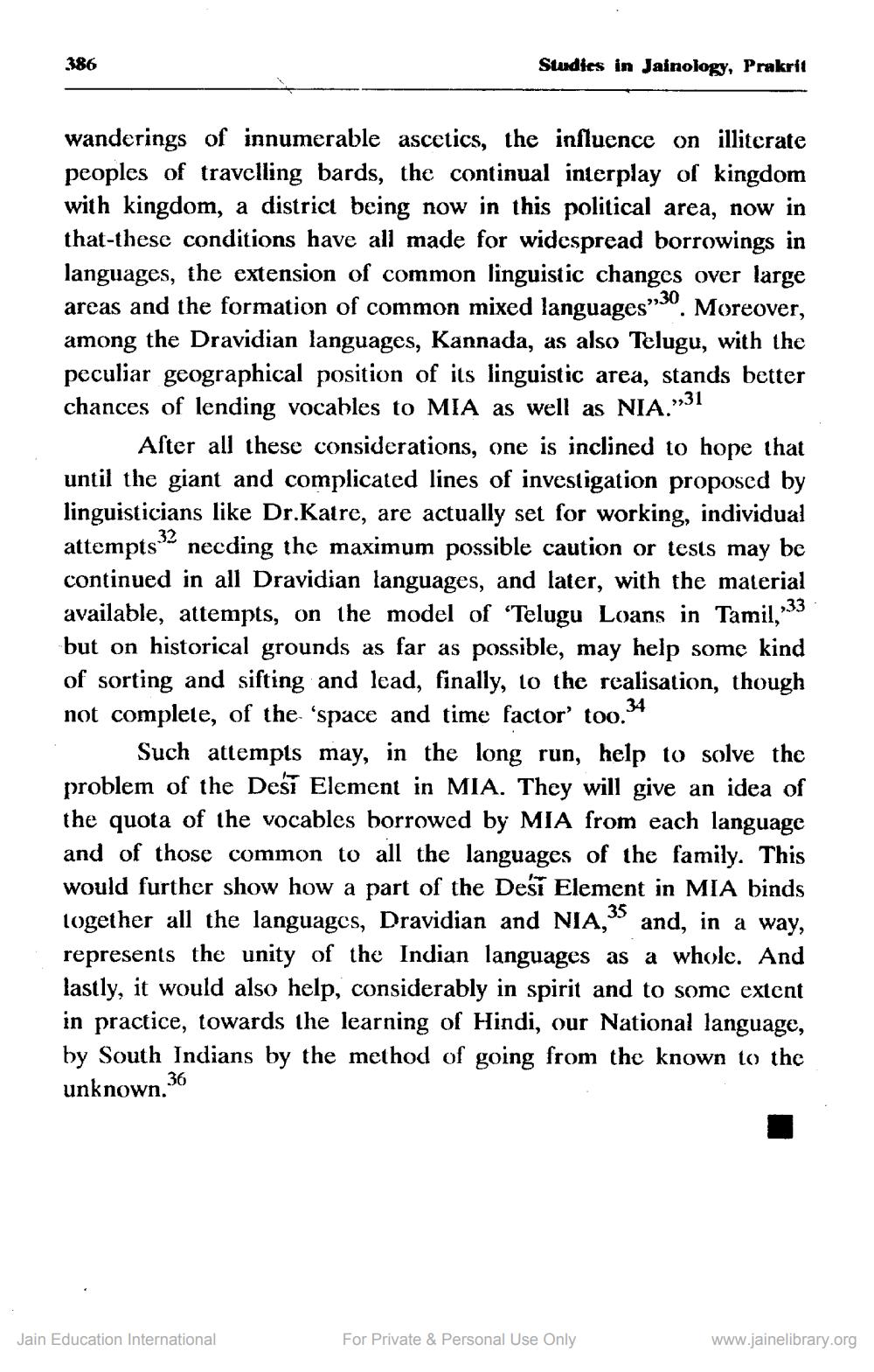________________
386
Studies in Jainology, Prakrit
wanderings of innumerable ascetics, the influence on illiterate peoples of travelling bards, the continual interplay of kingdom with kingdom, a district being now in this political area, now in that-these conditions have all made for widespread borrowings in languages, the extension of common linguistic changes over large areas and the formation of common mixed languages”30. Moreover, among the Dravidian languages, Kannada, as also Telugu, with the peculiar geographical position of its linguistic area, stands better chances of lending vocables to MIA as well as NIA.”31
After all these considerations, one is inclined to hope that until the giant and complicated lines of investigation proposed by linguisticians like Dr.Katre, are actually set for working, individual attempts necding the maximum possible caution or tests may be continued in all Dravidian languages, and later, with the material available, attempts, on the model of 'Telugu Loans in Tamil,133 but on historical grounds as far as possible, may help some kind of sorting and sifting and lead, finally, to the realisation, though not complete, of the 'space and time factor too.
Such attempts may, in the long run, help to solve the problem of the Desī Element in MIA. They will give an idea of the quota of the vocables borrowed by MIA from each language and of those common to all the languages of the family. This would further show how a part of the Desī Element in MIA binds together all the languages, Dravidian and NIA," and, in a way, represents the unity of the Indian languages as a whole. And lastly, it would also help, considerably in spirit and to some extent in practice, towards the learning of Hindi, our National language, by South Indians by the method of going from the known to the unknown.36
Jain Education International
For Private & Personal Use Only
www.jainelibrary.org




